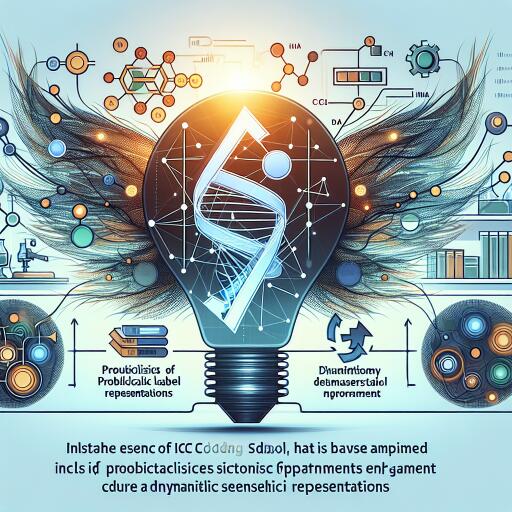Revolutionizing ICD Coding with ICDXML: A Leap Forward in Medical Data Processing
The International Classification of Diseases (ICD) coding has long been the cornerstone of healthcare data, facilitating billing processes, epidemiological research, and health management. However, the manual encoding of medical diagnoses into ICD codes is fraught with challenges, including time consumption and potential inaccuracies. Advancements in artificial intelligence (AI) and natural language processing (NLP) technologies present novel opportunities to enhance the efficiency and reliability of this process. Among the most significant of these advancements is the development of ICDXML, a pioneering approach that utilizes probabilistic label trees and dynamic semantic representations to automate ICD coding with unprecedented accuracy.
Embracing Transfer Learning for Improved ICD Coding
A key breakthrough in the evolution of automated ICD coding systems comes from adopting transfer learning techniques. This method entails pre-training expansive medical corpora on transformer-based language models, followed by fine-tuning these models to handle specific ICD coding tasks. This approach benefits from the wealth of knowledge stored in comprehensive medical datasets, leading to enhanced performance in automated ICD coding systems. Moreover, there has been a growing interest in employing pre-trained generative models, which approach text classification as text generation tasks, further innovating the field by generating texts mapped directly to corresponding ICD codes.
Advancing Text Representation with PLMs and Deformable Convolution
To accurately represent discharge summaries, ICDXML leverages a blend of Pre-trained Language Models (PLMs) and one-dimensional deformable convolutional structures. This combination not only extracts vector representations of text via PLMs but enhances these representations with knowledge graph embeddings. Such advancements address the challenges posed by the lengthy texts often found in electronic health records (EHRs), exceeding the maximum input length of conventional models like BERT.
ClinicalLongformer, a PLM tailored for long medical texts and pre-trained on extensive medical databases, plays a pivotal role in encoding these summaries. ICDXML innovates further by combining the hidden states from both the bottom and top layers of the PLM, integrating detailed textual features with advanced semantic abstractions to yield a richer text representation.
Introducing Deformable Convolutions to Text Representation
The application of deformable convolutional structures marks a significant innovation, drawing inspiration from advancements in computer vision. Traditional convolutional neural networks (CNNs), with their fixed stride and kernel shape, often struggle to capture high-level semantic features. Deformable convolutions, by adapting the shape of convolutional kernels, offer a flexible and dynamic way to fuse hidden states from the PLM, leading to enhanced semantic representations capable of capturing long-distance dependencies within the text.
Enhancing Representation with External Knowledge
To further bolster the model’s performance, ICDXML incorporates external knowledge through biomedical knowledge graph embeddings, like those from Medical Subject Headings (MeSH). By merging these embeddings with PLM representations, the model achieves a comprehensive representation of discharge summaries. Emphasizing the need for integration, techniques are applied to align the heterogeneous representations from diverse semantic and knowledge graph spaces effectively.
Scaling to Large Label Spaces with Probabilistic Label Trees
ICDXML tackles the challenge of multi-label text classification through innovative tree-based classifiers suitable for large output spaces. By constructing a hierarchical label tree over the ICD codes, the model exploits their inherent correlations, significantly improving the prediction of relevant codes. This hierarchical approach not only retains the structure of the output space but also scales effectively with large label spaces.
Conclusion
The introduction of ICDXML represents a transformative step in the realm of medical data processing, offering a robust, efficient solution to the longstanding challenges of ICD coding. By leveraging cutting-edge methodologies such as transfer learning, dynamic semantic representations, and probabilistic label trees, ICDXML sets a new standard for accuracy and efficiency in automated ICD coding. As healthcare continues to evolve towards more data-driven approaches, such advancements underscore the critical role of technology in enhancing the accuracy and usability of medical information.










